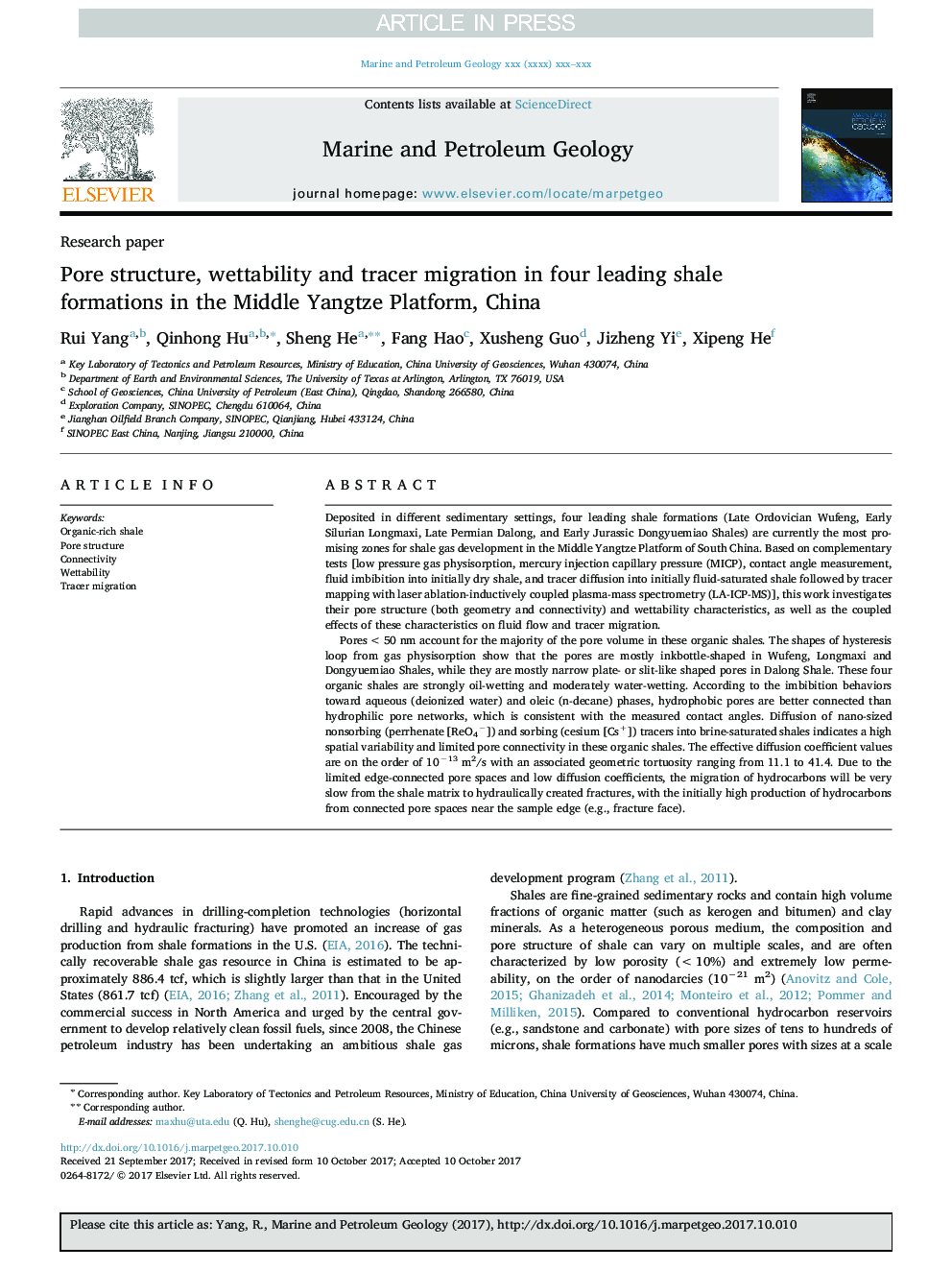| Article ID | Journal | Published Year | Pages | File Type |
|---|---|---|---|---|
| 8909286 | Marine and Petroleum Geology | 2018 | 13 Pages |
Abstract
Pores <50Â nm account for the majority of the pore volume in these organic shales. The shapes of hysteresis loop from gas physisorption show that the pores are mostly inkbottle-shaped in Wufeng, Longmaxi and Dongyuemiao Shales, while they are mostly narrow plate- or slit-like shaped pores in Dalong Shale. These four organic shales are strongly oil-wetting and moderately water-wetting. According to the imbibition behaviors toward aqueous (deionized water) and oleic (n-decane) phases, hydrophobic pores are better connected than hydrophilic pore networks, which is consistent with the measured contact angles. Diffusion of nano-sized nonsorbing (perrhenate [ReO4â]) and sorbing (cesium [Cs+]) tracers into brine-saturated shales indicates a high spatial variability and limited pore connectivity in these organic shales. The effective diffusion coefficient values are on the order of 10â13Â m2/s with an associated geometric tortuosity ranging from 11.1 to 41.4. Due to the limited edge-connected pore spaces and low diffusion coefficients, the migration of hydrocarbons will be very slow from the shale matrix to hydraulically created fractures, with the initially high production of hydrocarbons from connected pore spaces near the sample edge (e.g., fracture face).
Related Topics
Physical Sciences and Engineering
Earth and Planetary Sciences
Economic Geology
Authors
Rui Yang, Qinhong Hu, Sheng He, Fang Hao, Xusheng Guo, Jizheng Yi, Xipeng He,
